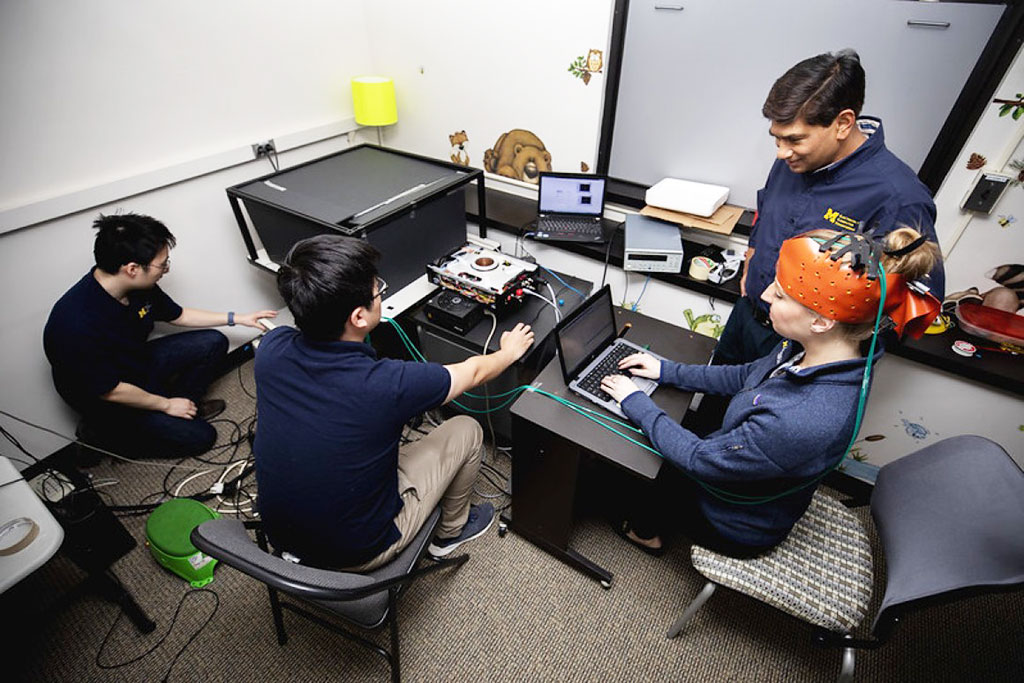Infrared Super-Continuum Laser Monitors Brain Health
By MedImaging International staff writers
Posted on 10 Feb 2020
A new study describes how a portable super-continuum device uses infrared (IR) light to monitor cytochrome C oxidase (CCO) metabolism as an indicator of brain cell distress. Posted on 10 Feb 2020
Developed at the University of Michigan (U-M; Ann Arbor, USA), the new device does not monitor whether the brain is getting oxygen, but rather if the brain cells are able to use that oxygen. Research shows that CCO is excited by laser light transmitted at wavelengths of 750 to 900 nanometers (the resonant frequency). By recording levels of CCO, brain metabolism can be quantified non-invasively in-situ, for example in the emergency room (ER) or intensive care unit (ICU). The study was presented at the annual Photonics West conference, held during February 2020 in San Francisco (CA, USA).

Image: The concussion detecting laser in human trials (Photo courtesy of Joseph Xu/ U-M)
“Concussions in athletics have been in the spotlight for the previous decade, but soldiers are also at high risk. At present, there is no one test that can diagnose a concussion. There’s no scan, no blood test, no computer test. We currently rely on a clinical exam and interpretation by the medical provider, so the diagnosis is subjective,” said Professor Steven Broglio, MD, director of the Michigan Concussion Center. “We believe this technology is the first step in changing that by measuring brain metabolism, potentially resulting in faster and more certain diagnoses.”
“This device could guide the treatment of more serious brain injuries and other conditions that put the brain at risk. In its broadest application, it could help patients whose blood pressure falls so much that there isn’t enough blood flow to keep cells functioning normally,” said trauma and emergency surgeon Rachel Russo, MD. “This would be the first device that could measure how well their brain cells are doing right in the hospital room.”
CCO is the membrane-bound enzyme that is found in essentially all organisms that utilize oxygen. It serves as the terminal constituent of the electron transport chain in the inner mitochondrial membrane, where it reduces molecular oxygen to form water, allowing adenosine triphosphate (ATP) production. The activity of CCO can be used to determine the number of active mitochondria or increase in electron transport activity in the mitochondria (energy expense or respiration rate).
Related Links:
University of Michigan














